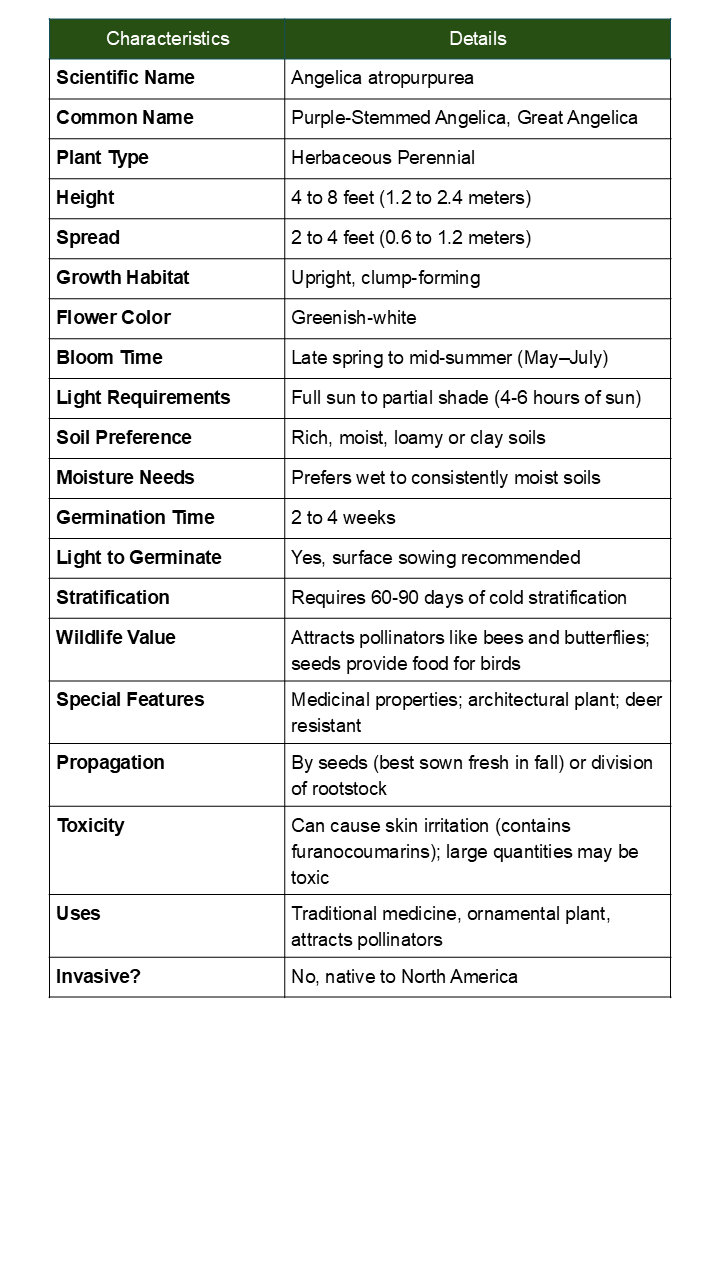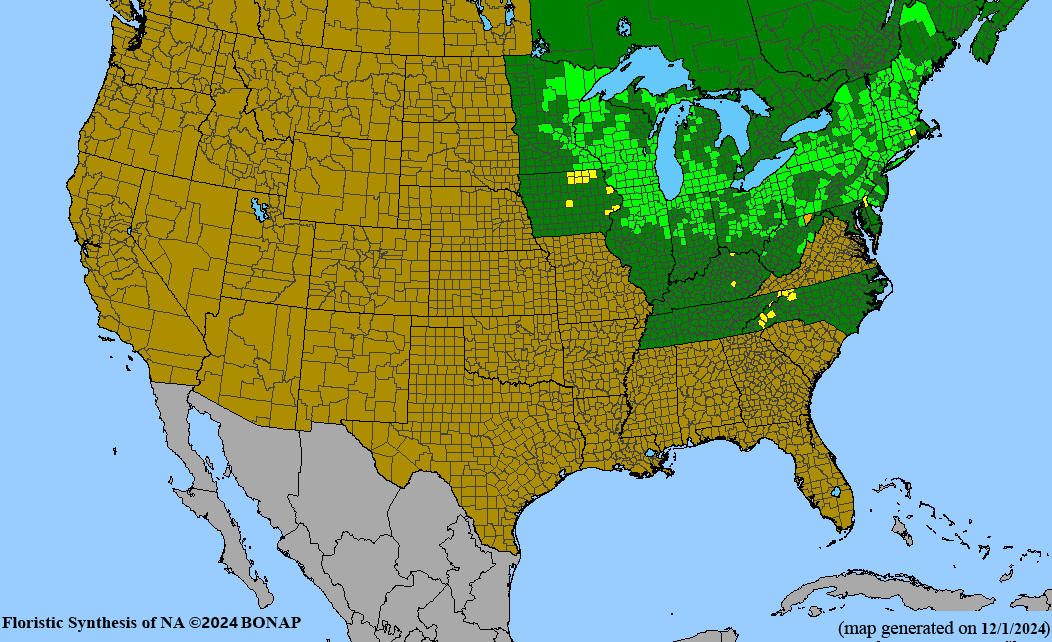Great Angelica Native Wildflower Seeds - Angelica atropurpurea
Regular price$4.00
/
Tax included.
No reviews
Description
Discover the Majestic Great Angelica
Bring dramatic height and architectural beauty to your garden with Great Angelica (Angelica atropurpurea), a stunning native biennial that creates impressive 4-8 foot tall specimens crowned with large, umbrella-shaped clusters of white to greenish-white flowers.
Why Choose Great Angelica?
- Architectural Impact: Creates dramatic vertical interest with towering stems and large compound leaves
- Pollinator Powerhouse: Massive flower umbels attract countless bees, butterflies, and beneficial insects
- Wetland Native: Thrives in moist conditions where many plants struggle
- Wildlife Value: Seeds feed birds, stems provide nesting material, roots support soil stability
- Medicinal Heritage: Historically used in traditional herbal practices
- Fragrant Foliage: Aromatic leaves and stems add sensory appeal
Growing Information
Height: 4-8 feet tall
Spread: 3-4 feet wide
Light: Partial shade to full sun
Soil: Moist to wet, rich soils preferred
Zones: Hardy in USDA zones 3-9
Bloom Time: July to August (second year)
Life Cycle: Biennial (flowers in second year)
Perfect for rain gardens, pond edges, woodland borders, and naturalized wetland areas. Great Angelica makes an excellent backdrop plant and thrives in consistently moist conditions.



